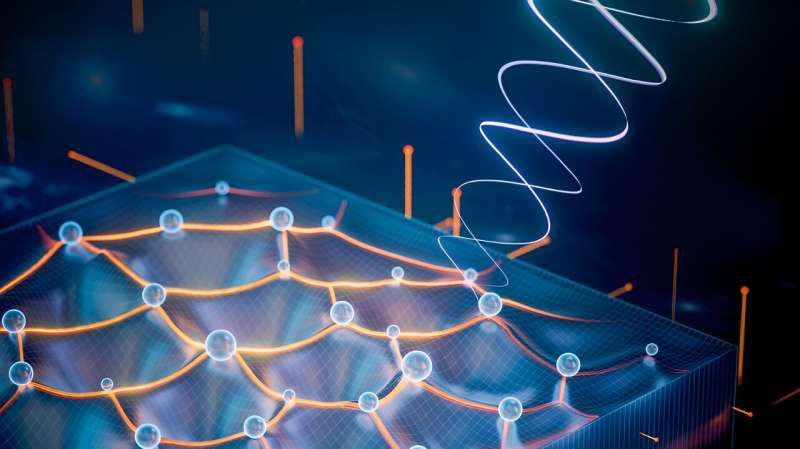An article recently published in the journal Nature First experimental proof of the graviton concept, Hypothetical elementary particles that could be responsible for transmitting the gravitational force. The testing was performed on collective spin excitations called chiral graviton modes (CGMs) in a semiconductor material.
Gravitons and CGMs are similar particles, but the former, although (theoretically) well known in the context of quantum gravity, has not yet been discovered. Because they are similar to gravitons, CGMs can help study their physics, according to the paper’s first author, Lingjie Du, a professor of physics at Nanjing University in China.
Searched for decades Proving the existence of gravitons may be necessary to unify two fundamental theories of modern physics.: quantum mechanics and Einstein’s theory of general relativity.
How were CGMs in quantum materials discovered?
The graviton-like particle was discovered by the authors in a type of condensed matter known as fractional quantum Hall effect liquid (FQHE). This is quantum fluid It consists of two-dimensional electron systems under extreme conditions such as low temperatures and high magnetic fields.
Although the FQHE theory proposes that light interacts with its electrons in a specific way due to quantum metrics, when it was discovered by Daniel Tsui, Horst Störmer and Arthur Gossard in 1982, an experimental methodology that could explain this theory did not yet exist. this suggestion.
Li and his international colleagues adapted this different state of matter to use so-called circularly polarized light, in which photons have a specific spin. When these light particles interact with a (also spinning) CGM, the spin sign of the photons changes in a different way than when interacting with other types of modes.
What are the implications of observing the properties of CGMs in semiconductor?

By directing a precisely tuned laser at the FQHE semiconductor, the team was able to observe:Physical properties consistent with those predicted by quantum geometry for CGMsincluding spin-2 nature, characteristic energy gaps between ground and excited states, and dependence on so-called filling factors,” the study says.
This showed that the excitation had a type of quantum spin that could only (theoretically) exist in gravitons. In other words, it’s not a real graviton yet, but “This is the closest thing we’ve ever seen.”the authors say in a statement.
Since these are electrons confined to a flat, two-dimensional space and moving slower than the objects governed by the theory of relativity, it is too early to make a space-time analogy. But the results are a first step towards potentially connecting high energy physics and condensed matter physics.
Did you like the content? So follow the latest work in physics at TecMundo and get the opportunity to understand how a quantum simulator can solve one of the great mysteries of science.
Source: Tec Mundo
I’m Blaine Morgan, an experienced journalist and writer with over 8 years of experience in the tech industry. My expertise lies in writing about technology news and trends, covering everything from cutting-edge gadgets to emerging software developments. I’ve written for several leading publications including Gadget Onus where I am an author.













